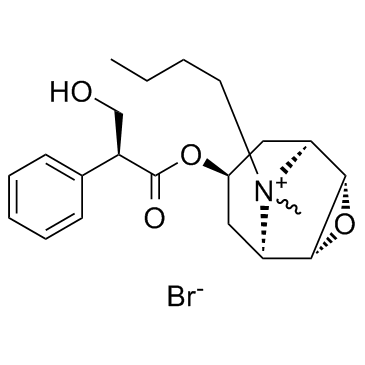Lymphoid nodular hyperplasia of the terminal ileum can mimic active crohn disease on MR enterography.
Andrew A Plumb, Douglas A Pendsé, Sara McCartney, Shonit Punwani, Steve Halligan, Stuart A Taylor
Index: AJR Am. J. Roentgenol. 203(4) , W400-7, (2014)
Full Text: HTML
Abstract
The purpose of this article is to describe the MRI findings associated with lymphoid nodular hyperplasia at MR enterography and test the ability of radiologists to differentiate healthy control subjects from patients with Crohn disease (CD).Ethical approval was granted for this retrospective study. Thirty-five subjects (nine with lymphoid nodular hyperplasia, 13 with CD, and 13 control subjects) who had undergone MR enterography and ileocolonoscopy were identified from the hospital database. Two abdominal radiologists, working in consensus and blinded to diagnosis, scored enteric MR images for T2 signal, contrast enhancement, mural thickness, and diffusion-weighted imaging (DWI) signal and measured the apparent diffusion coefficient (ADC) in all three groups. Scores were compared using the Kruskal-Wallis test.T2 signal and contrast enhancement were judged subjectively to be greater in patients with lymphoid nodular hyperplasia and CD than control subjects (p < 0.001). Mural thickness was greater for patients with lymphoid nodular hyperplasia (median, 6.0 mm) and CD (median, 7.3 mm) than control subjects (median, 2.3 mm) (p < 0.001). Lymphoid nodular hyperplasia and CD increased subjective DWI signal and reduced ADC in comparison with normal control subjects; median ADC was 1.34 × 10(-3) mm(2)/s for lymphoid nodular hyperplasia, 1.36 × 10(-3) mm(2)/s for CD, and 1.86 × 10(-3) mm(2)/s for control subjects (p < 0.001). None of T2 signal, contrast enhancement, wall thickness, DWI signal, or ADC value significantly differed between lymphoid nodular hyperplasia and CD. Lymphoid nodular hyperplasia was erroneously diagnosed as CD in blinded assessment in four of nine cases (44%), whereas all cases of CD and healthy control subjects were correctly classified.Lymphoid nodular hyperplasia alters both subjective and quantitative MRI parameters, including T2 signal, contrast enhancement, mural thickness, and ADC. In a subset of patients, lymphoid nodular hyperplasia may be indistinguishable from CD on MR enterography.
Related Compounds
| Structure | Name/CAS No. | Molecular Formula | Articles |
|---|---|---|---|
 |
Scopolamine butylbromide
CAS:149-64-4 |
C21H30BrNO4 |
|
Chemical genetics reveals a complex functional ground state ...
2007-05-01 [Nat. Chem. Biol. 3(5) , 268-273, (2007)] |
|
Small intestinal contrast ultrasonography for the detection ...
2015-01-01 [J. Gastroenterol. Hepatol. 30(1) , 86-91, (2014)] |
|
Hyoscine butylbromide: a review of its use in the treatment ...
2007-01-01 [Drugs 67(9) , 1343-57, (2007)] |
|
Colonic distention at CT colonography: randomized evaluation...
2015-01-01 [AJR Am. J. Roentgenol. 204(1) , 76-82, (2015)] |
|
Global small bowel motility: assessment with dynamic MR imag...
2013-11-01 [Radiology 269(2) , 443-50, (2013)] |